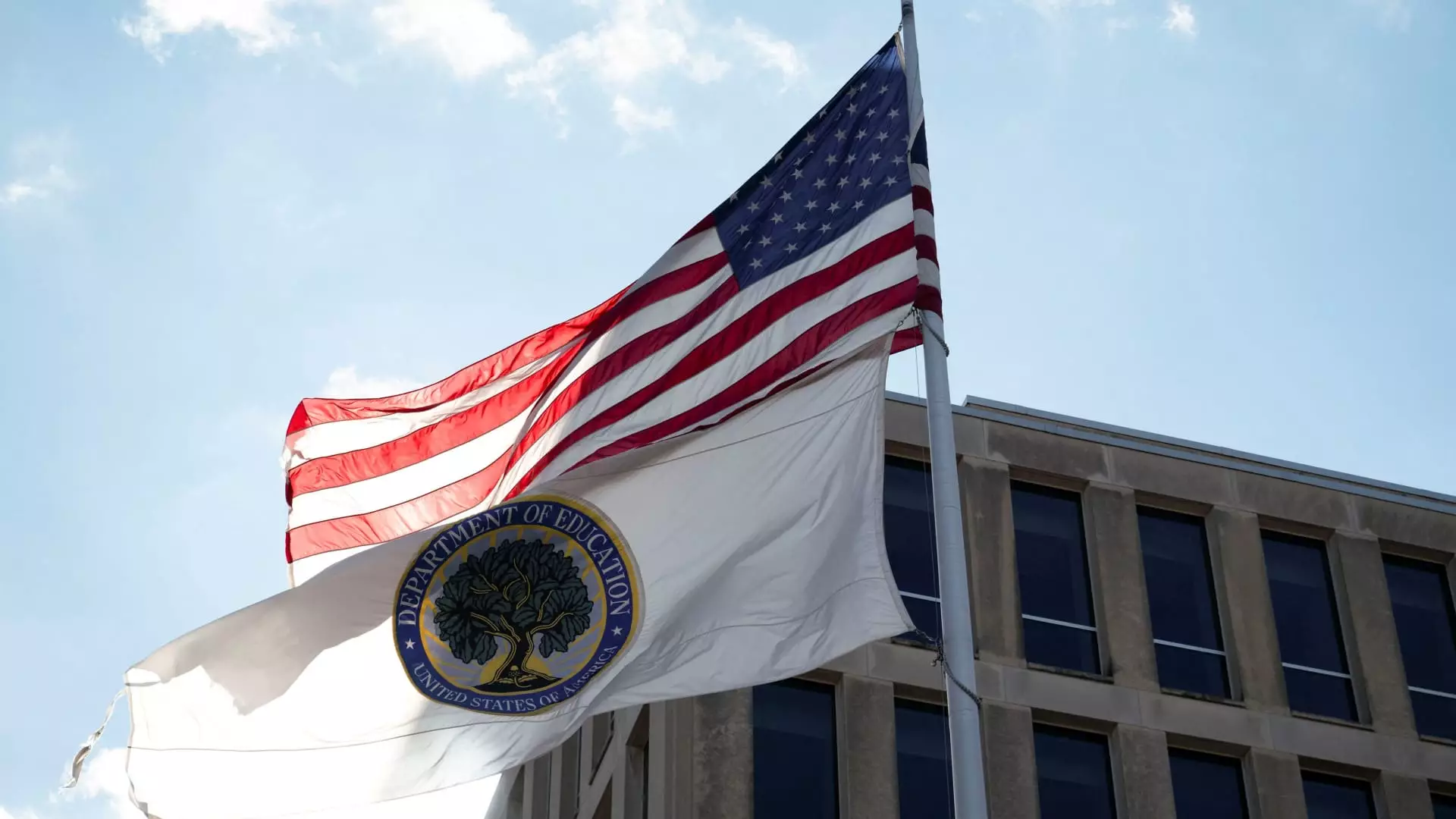The landscape of federal education funding and student loans in the United States faces a turbulent future as discussions around the potential closure or restructuring of the U.S. Department of Education gain traction. For the nation’s 42 million federal student loan borrowers, the implications of such significant changes can evoke anxiety and uncertainty about their financial future. With an astounding $1.6 trillion in outstanding student debt in play, the stakes are undeniably high.
The prospect of the Trump administration seeking to close or drastically alter the Department of Education has caused ripples throughout the education and financial sectors. Although dismantling a federal agency requires Congressional action, the administration is reportedly considering an executive order that could freeze certain functions of the department. This notion raises alarms about the administration’s commitment to education as a public good and how it affects those who rely heavily on student loans for their educational aspirations.
Betsy Mayotte, president of The Institute of Student Loan Advisors, highlights the emotional toll this uncertainty has on borrowers. With many feeling sidelined by governmental decisions that may ultimately decide their financial fates, it is crucial to recognize the fear that the unknown creates among those with student debt. Continuous discourse about closing the Department of Education not only generates anxiety but also threatens the foundational support systems that have been established over decades.
The U.S. Department of Education was established in 1979, primarily to centralize federal education funding and enhance the quality of education in the country. However, its existence has perpetually been challenged, with former President Ronald Reagan advocating for its closure in the 1980s and Trump previously attempting to merge it with the Labor Department. Such historical waves of criticism reflect a longstanding tension between educational priorities and government policy, often swayed by political ideologies that may lack consideration for the long-term consequences on individuals pursuing higher education.
Recent polls indicate a significant backlash against the potential use of an executive order to dismantle the Department of Education. Data from a survey conducted by Data for Progress reveals that 61% of likely voters oppose such a drastic action. This statistic portrays a stark discrepancy between the political narrative and public sentiment regarding education policy.
Even if the Department of Education ceases to exist, the reality for student loan borrowers remains unchanged in a fundamental sense; they would still be obligated to repay their loans. This complicates the narrative around agency closure, as the mechanics of student loans are unlikely to change simply because the organization handling the debt does. Mayotte points out instances where mortgage loans are sold to different servicers, illustrating that while the entity managing loans might shift, the obligations remain intact.
The immediate concerns for borrowers revolve around who would manage their loans if the Education Department were dismantled. The Treasury Department has been suggested as a possible alternative, but this raises questions about expertise and the overall capacity to address the specific needs of student loan borrowers. There are fears that such a transition could exacerbate existing problems within the student loan system, which consumer advocates argue already lacks adequate borrower protections.
Calls for privatizing the federal student loan system are yet another source of concern among experts. Advocates for borrowers emphasize the necessity of maintaining protective measures that ensure fair treatment and stability for students. The apprehension surrounding potential privatization stems from the limited regulatory obligations that private lenders would face, posing further risks to vulnerable borrowers.
Michele Shepard Zampini, the senior director of college affordability at The Institute For College Access and Success, clearly articulates the gravity of the situation. The bureaucratic upheaval stemming from a potential agency closure could hinder access to financial aid for both current and future students, creating chaos in an already fragile system. As families count on student loans to pursue higher education, any disruption in availability can have dire long-term consequences.
Mark Kantrowitz echoing these sentiments highlights that disruptions in educational financing avenues could fundamentally derail students’ aspirations for higher education. A stable and reliable support system is vital for fostering educational growth and, consequently, a prosperous workforce.
As debates surrounding the future of the Department of Education gain momentum, the well-being and stability of millions of borrowers hang delicately in the balance. Engaging in informed discussions about educational policies and recognizing the fragility of borrowers’ situations remains paramount in navigating this pivotal moment in U.S. education.

Leave a Reply